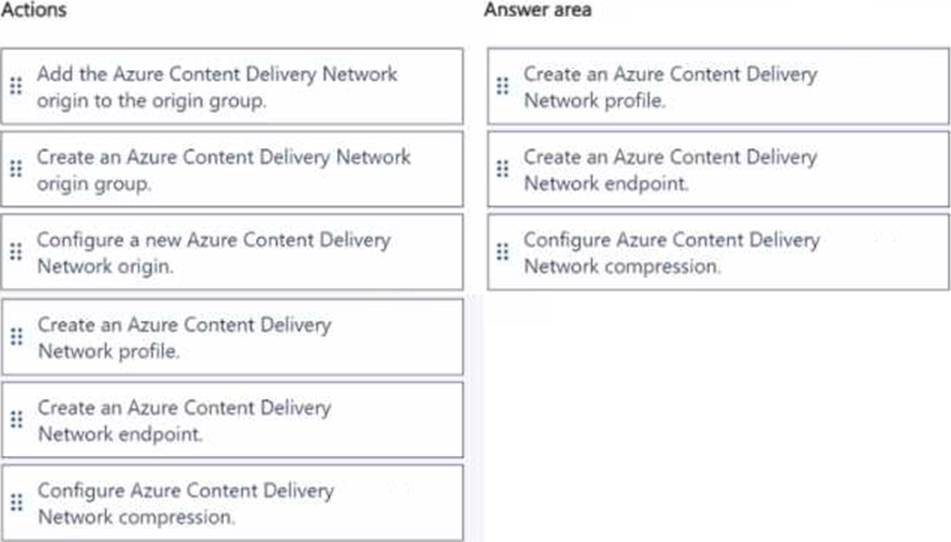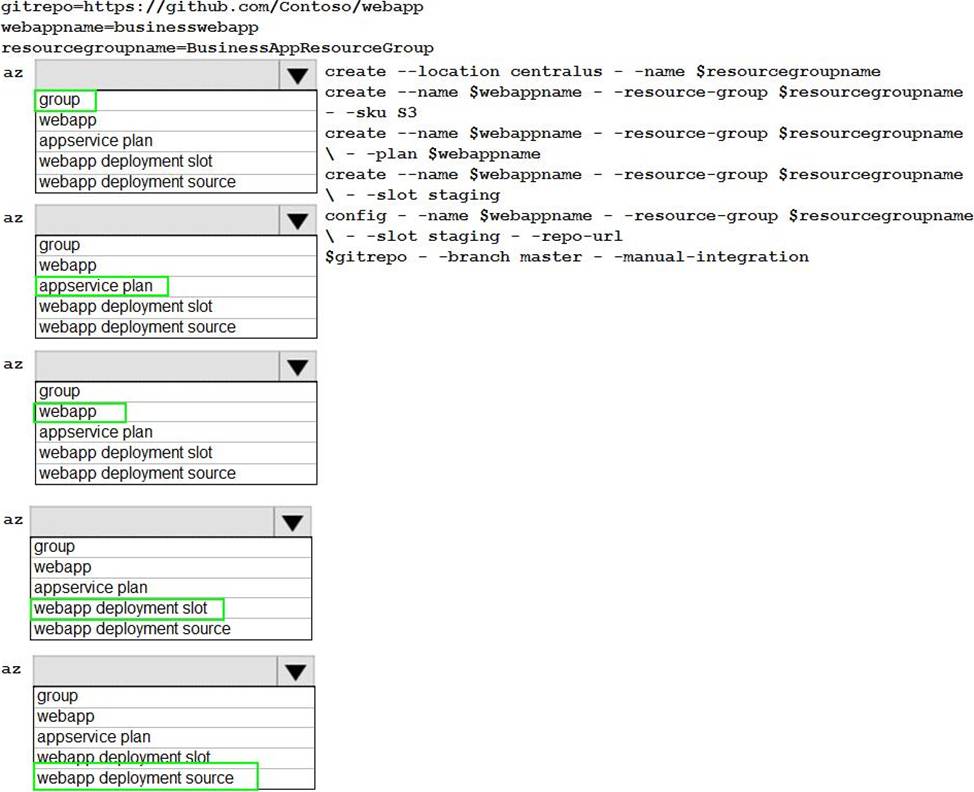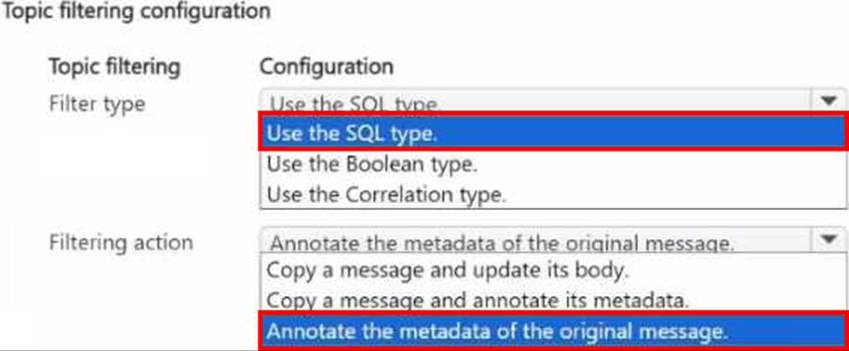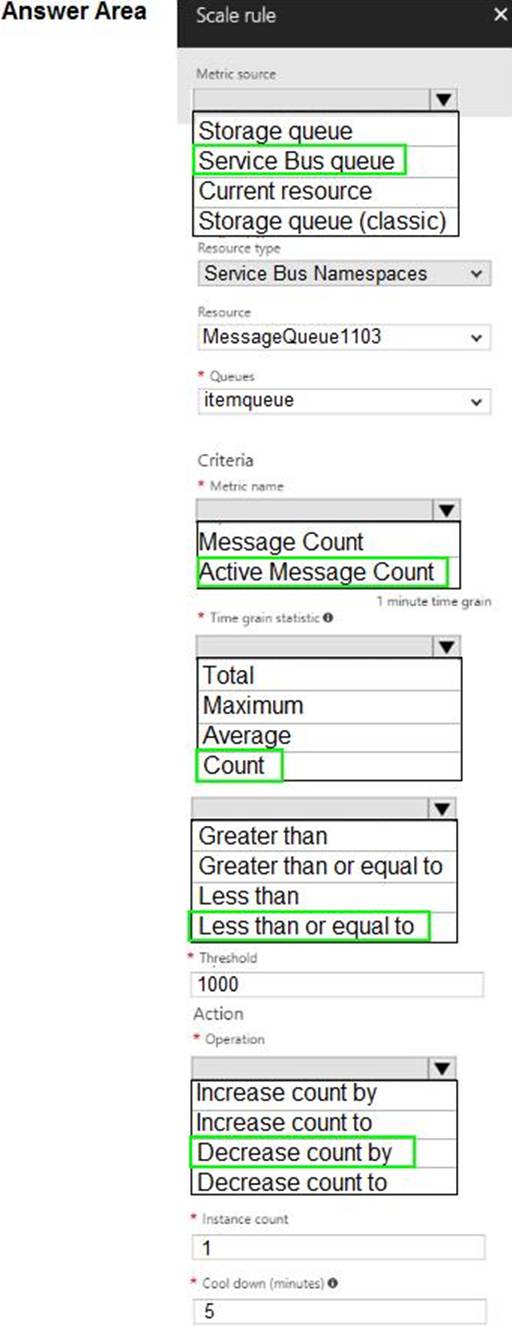Practice Free AZ-204 Exam Online Questions
DRAG DROP
You are designing a solution that will use two Azure Functions apps: App1 and App2. App1 is Windows-based and will be deployed as code. App2 is Linux-based and will be deployed as a container image. Estimates show that the duration of the request processing for both apps will range from 1 to 10 minutes.
You plan to implement Appl and App2 by using the hosting plan to satisfy the following requirements:
• Request processing can complete within the estimated time range.
• The autoscaling behavior is event-driven.
• The upper scaling limit is maximized.

DRAG DROP
You need to ensure that PolicyLib requirements are met.
How should you complete the code segment? To answer, drag the appropriate code segments to the correct locations. Each code segment may be used once, more than once, or not at all. You may need to drag the split bar between panes or scroll to view content. NOTE: Each correct selection is worth one point.

You are developing an Azure App Service web app.
The web app must securely store session information in Azure Redis Cache.
You need to connect the web app to Azure Redis Cache.
Which three Azure Redis Cache properties should you use? Each correct answer presents part of the solution. Each correct selection is worth one point.
- A . SSL port
- B . Subscription name
- C . Location
- D . Host name
- E . Access key
- F . Subscription id
DRAG DROP
You need to correct the internal staff issue with webpages.
Which three actions should you perform in sequence? To answer, move the appropriate actions from the list of actions to the answer area and arrange them in the correct order.
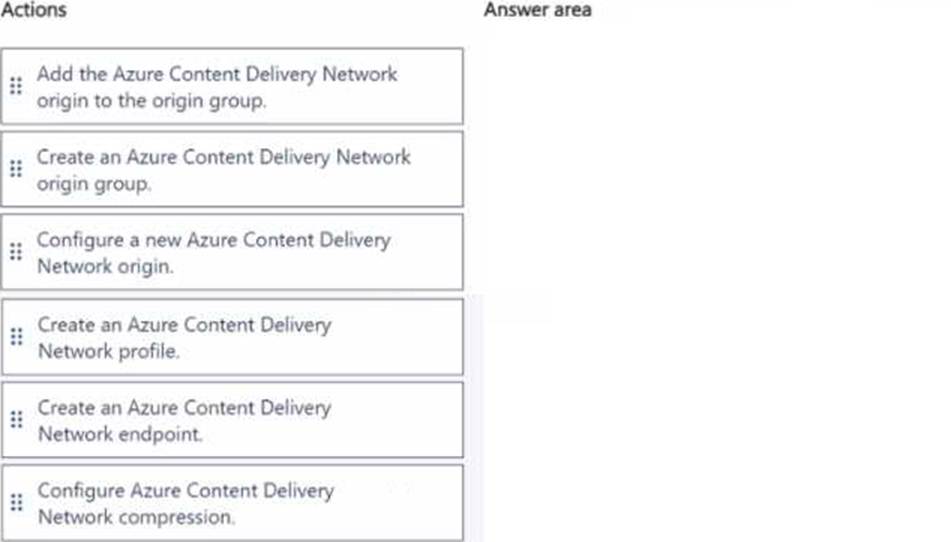
You are developing a medical records document management website. The website is used to store scanned copies of patient intake forms. If the stored intake forms are downloaded from storage by a third party, the content of the forms must not be compromised.
You need to store the intake forms according to the requirements.
Solution:
Create a Azure Key Vault key named skey.
Encrypt the intake forms using the public key portion of skey.
Store the encrypted data in Azure Blob storage
Does the solution meet the goal?
- A . Yes
- B . No
HOTSPOT
A company is developing a Java web app. The web app code is hosted in a GitHub repository located at https://github.com/Contoso/webapp.
The web app must be evaluated before it is moved to production. You must deploy the initial code release to a deployment slot named staging.
You need to create the web app and deploy the code.
How should you complete the commands? To answer, select the appropriate options in the answer area. NOTE: Each correct selection is worth one point.
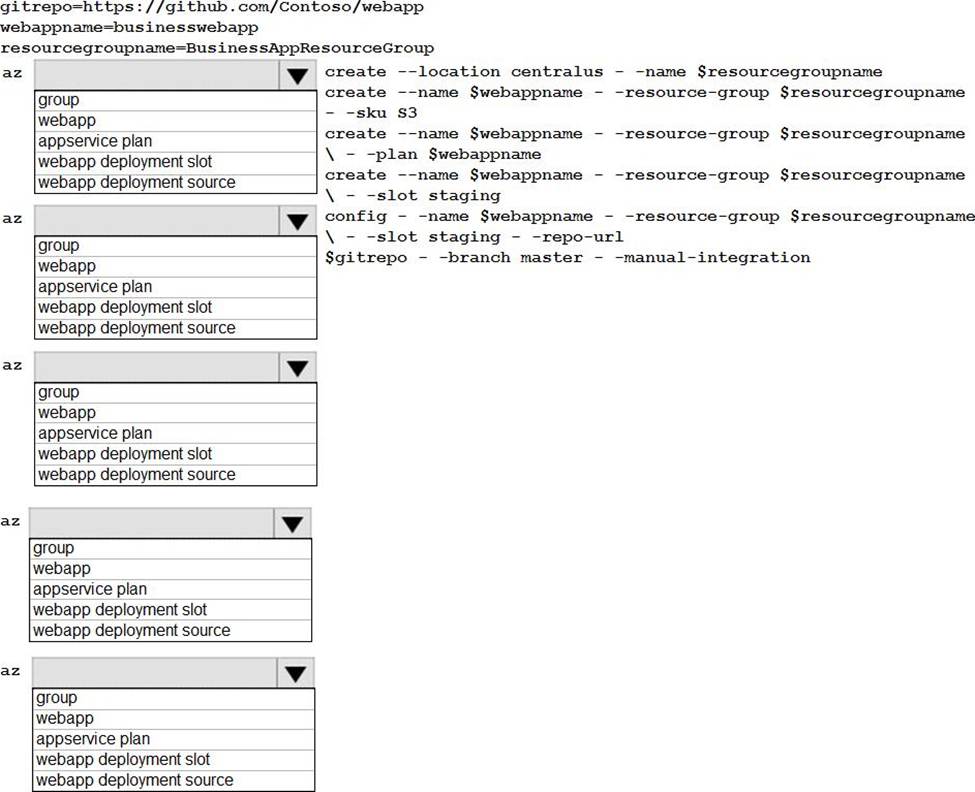
HOTSPOT
A company is developing a Java web app. The web app code is hosted in a GitHub repository located at https://github.com/Contoso/webapp.
The web app must be evaluated before it is moved to production. You must deploy the initial code release to a deployment slot named staging.
You need to create the web app and deploy the code.
How should you complete the commands? To answer, select the appropriate options in the answer area. NOTE: Each correct selection is worth one point.

HOTSPOT
You have an Azure Service Bus namespace that contains a topic named Topic 1.
You plan to create a subscription named Sub1 to Topic 1. In Sub1, you plan to filter messages from Topic1 based on their system properties and apply an action that will annotate each filtered message.
You need to configure the filtering.
How should you configure the filtering? To answer, select the appropriate options in the answer area. NOTE Each correct selection is worth one point.
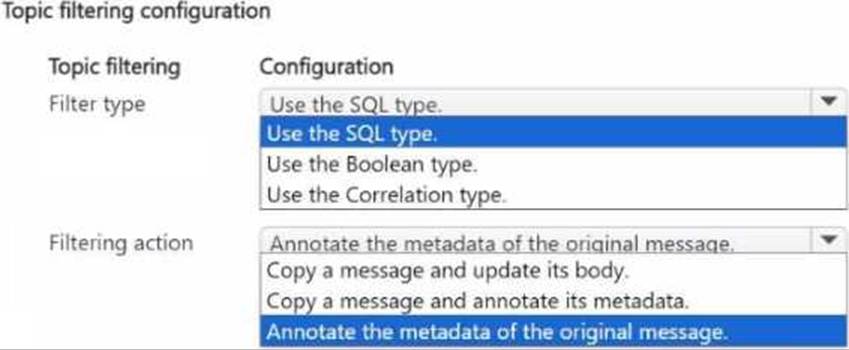
HOTSPOT
You are developing a back-end Azure App Service that scales based on the number of messages contained in a Service Bus queue.
A rule already exists to scale up the App Service when the average queue length of unprocessed and valid queue messages is greater than 1000.
You need to add a new rule that will continuously scale down the App Service as long as the scale up condition is not met.
How should you configure the Scale rule? To answer, select the appropriate options in the answer area. NOTE: Each correct selection is worth one point.
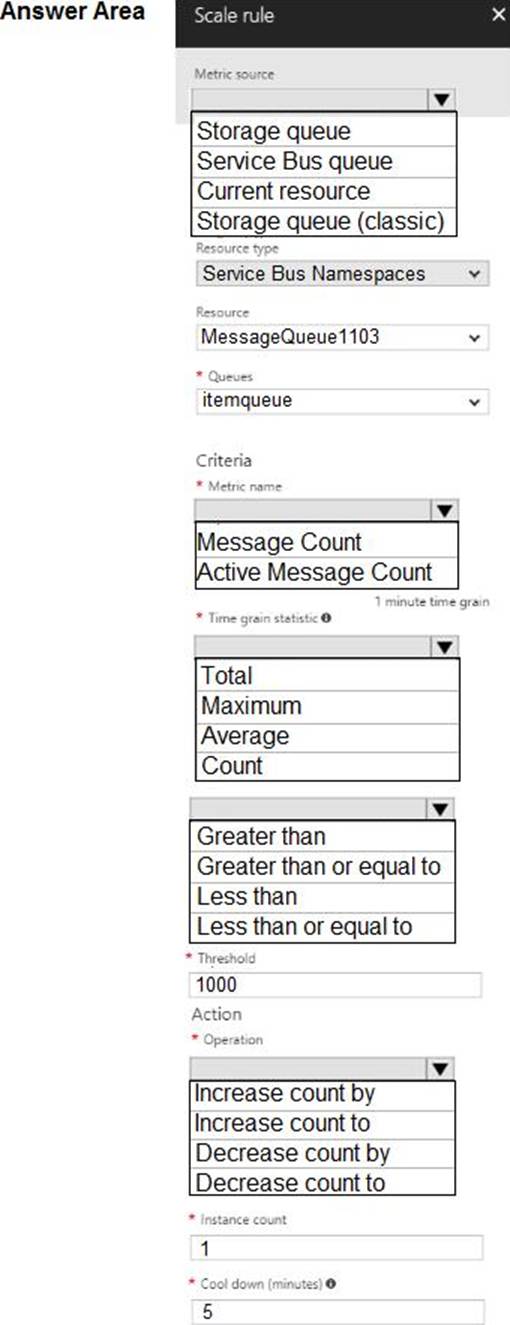
DRAG DROP
You are developing an ASP.NET Core website that can be used to manage photographs which are stored in Azure Blob Storage containers.
Users of the website authenticate by using their Azure Active Directory (Azure AD) credentials.
You implement role-based access control (RBAC) role permission on the containers that store photographs. You assign users to RBAC role.
You need to configure the website’s Azure AD Application so that user’s permissions can be used with the Azure Blob containers.
How should you configure the application? To answer, drag the appropriate setting to the correct location. Each setting may be used once, more than once, or not at all. You may need to drag the split bar between panes or scroll to view content. NOTE: Each correct selection is worth one point.




